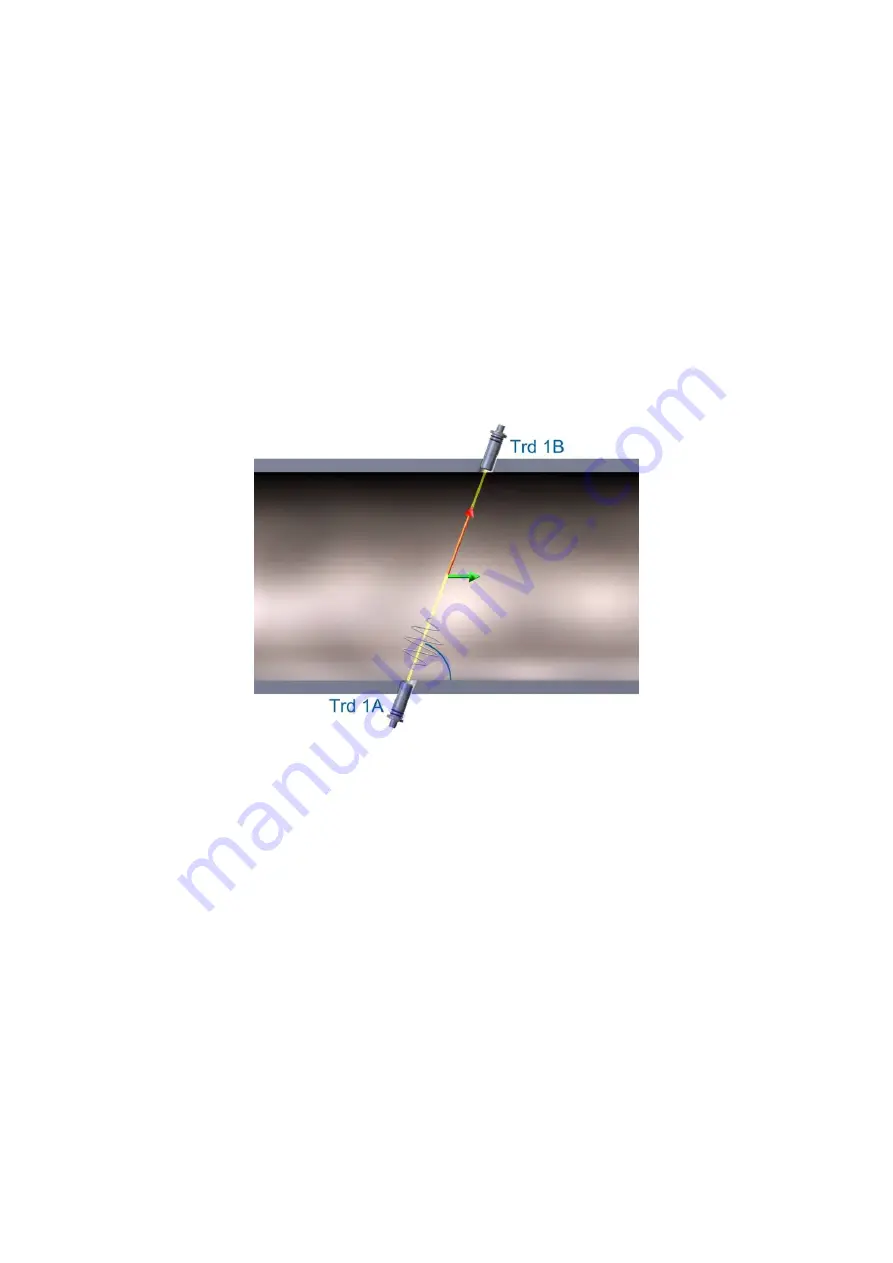
Operation & Installation Manual V12-V6 2010-05-31.doc
31/05/2010
8/60
2
Instrument description
2.1 Measuring principle
The ALTOSONIC V12 ultrasonic gas flow meter operates according to the principle of
measuring the transit time of an ultrasonic sound wave. A gas velocity is derived from the
difference in transit time of a sound wave travelling in a direction with the flow direction and
the sound wave travelling in the opposite direction.
The trajectory of the sound wave is called the acoustic path. A chord is the direct path
crossing the pipe from one side to the opposite side. Using reflection, an acoustic path can
consist of two or more chords. The name ALTOSONIC V12 is related to its design where 12
chords build 6 acoustic paths.
2.1.1. Transit time measuring principle
Figure 2-1: Transit Time Measuring Principle
For explanation of the principle:
In a pipe section two transducers Trd 1A and Trd 1B create an acoustic path, which in the
above figure, is a single chord.
This chord connects the active front sides of transducer A and transducer B; L is its length.
The cord intersects with the centre line of the pipe at an angle
φ
.
Both transducers are capable to transmit and receive an ultrasonic signal. In turn one
transducer acts as a transmitter, the other as receiver and the other way around.
The transit time of an ultrasonic signal along a measuring chord is influenced by the velocity
of the gas flow (v). If the gas flow is zero the transit time from Trd A to Trd B is exactly the
same as the transit time from Trd B to Trd A.
When the gas is flowing with a velocity v and with c being the speed of sound in the gas:
v • cos(
φ
) is the component of v in the direction of measurement chord.









































